
You Don’t Have to Go to Iceland to See the Northern Lights—Head Here Instead
In this stunning location, photographing the aurora borealis is only half the adventure.
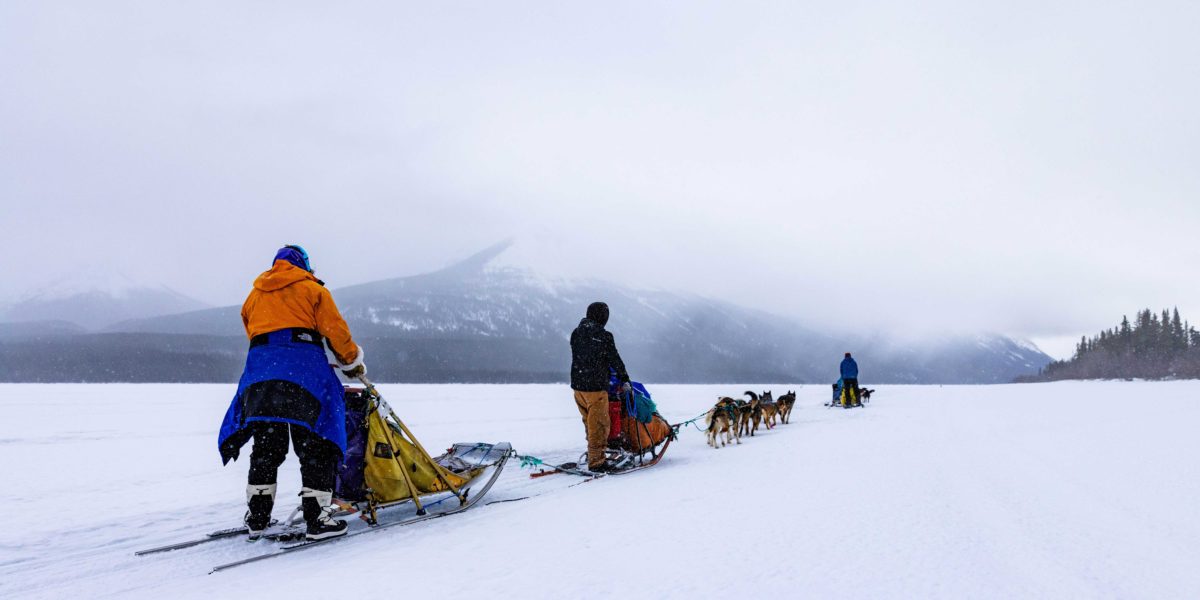
Pete O’hara And Jenna Dixon
Silence is deafening.
The old adage replayed in my mind as each footstep onto the snowpack of a frozen Pine Lake shattered a stillness that seemed to envelop the area with intent.
I angled my headlamp toward my watch. Just after midnight. Stars soared overhead, innumerable. Wilderness extended in every direction. The temperature dipped to 10 degrees below zero.
Extending the titanium legs of my tripod emitted a metallic “thunk” that seemed to echo amid my surroundings. I aimed my camera in the direction of a slight greenish glow on the horizon. Canada’s aurora borealis was barely visible to the naked eye, but an extended exposure just might pick up some of the slack.
It was my fourth night in the Yukon. I’d arrived with a mission of chasing and photographing the elusive northern lights. When the time came to depart two days later, I would be doing so unsuccessfully—at least by that standard.
But it didn’t make any difference.
“The chase is the adventure,” I recalled a brochure at the Whitehorse airport saying.
And it was.
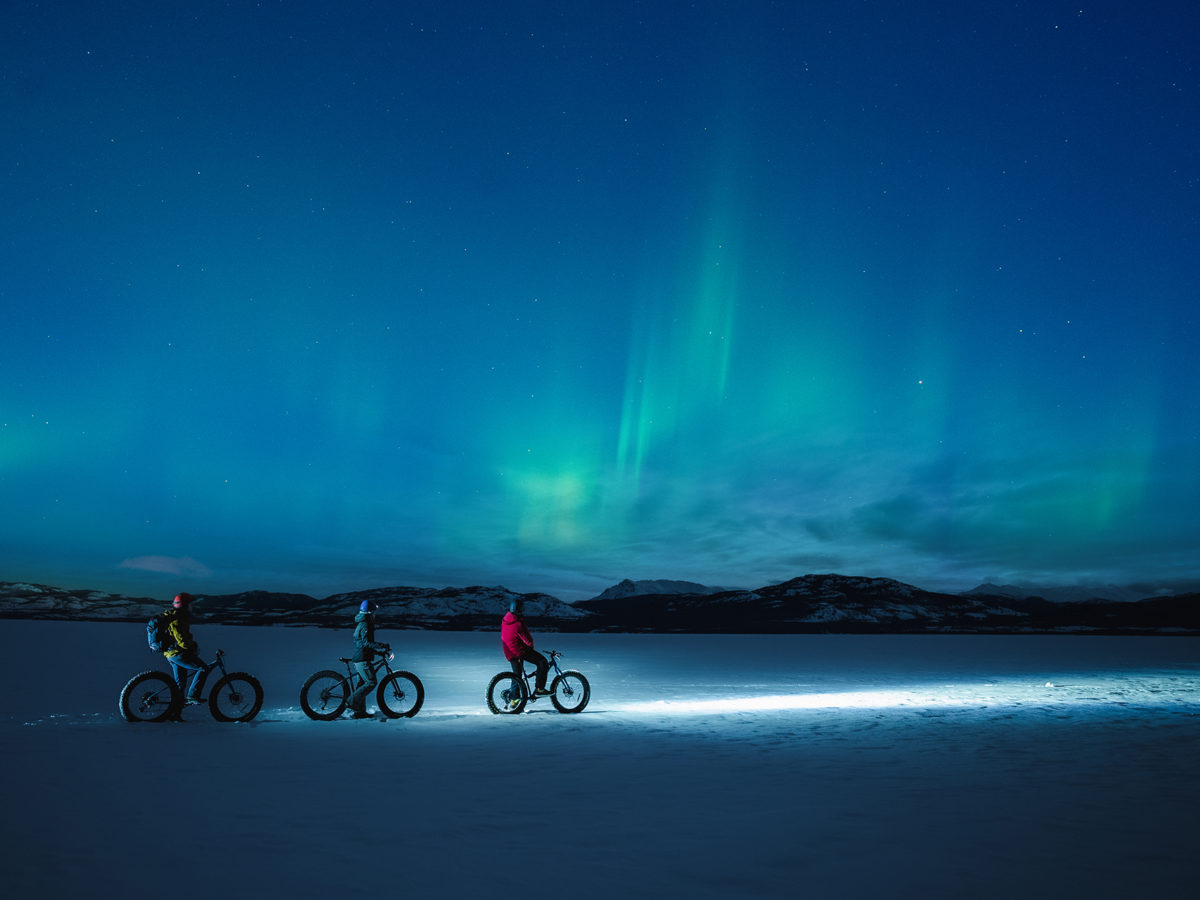
Pete O’hara And Jenna Dixon
The Yukon is a world brimming with magic, untamed and largely spared from human interference. Among its oceans of forest, mountain, rock, and ice is where, alongside a three-person team from Destination Canada and Travel Yukon, I spent a week—a mere taste of environs that tightened my own emotional tether to our world.
The experience ignited an eye-opening, primordial sense of exploration that incited not only an insatiable desire to return but a need to ensure that friends and family became well-acquainted with the destination’s potential for rejuvenation and liberation.
There are many means by which to explore the Yukon, whether in the bustling eateries and watering holes in its biggest city, Whitehorse, or in the wilderness that envelops it. Any avenue is sure to leave an indelible mark, even if, like me, you miss the aurora, a phenomenon First Nations myth attributes to ancestral spirits filling the sky with celebratory dance.
I was fortunate enough to experience the region through the mediums that follow, each category of which is worth a visit in its own right and cements the Yukon as a top tourism destination on traveler bucket lists.
Learning From Locals
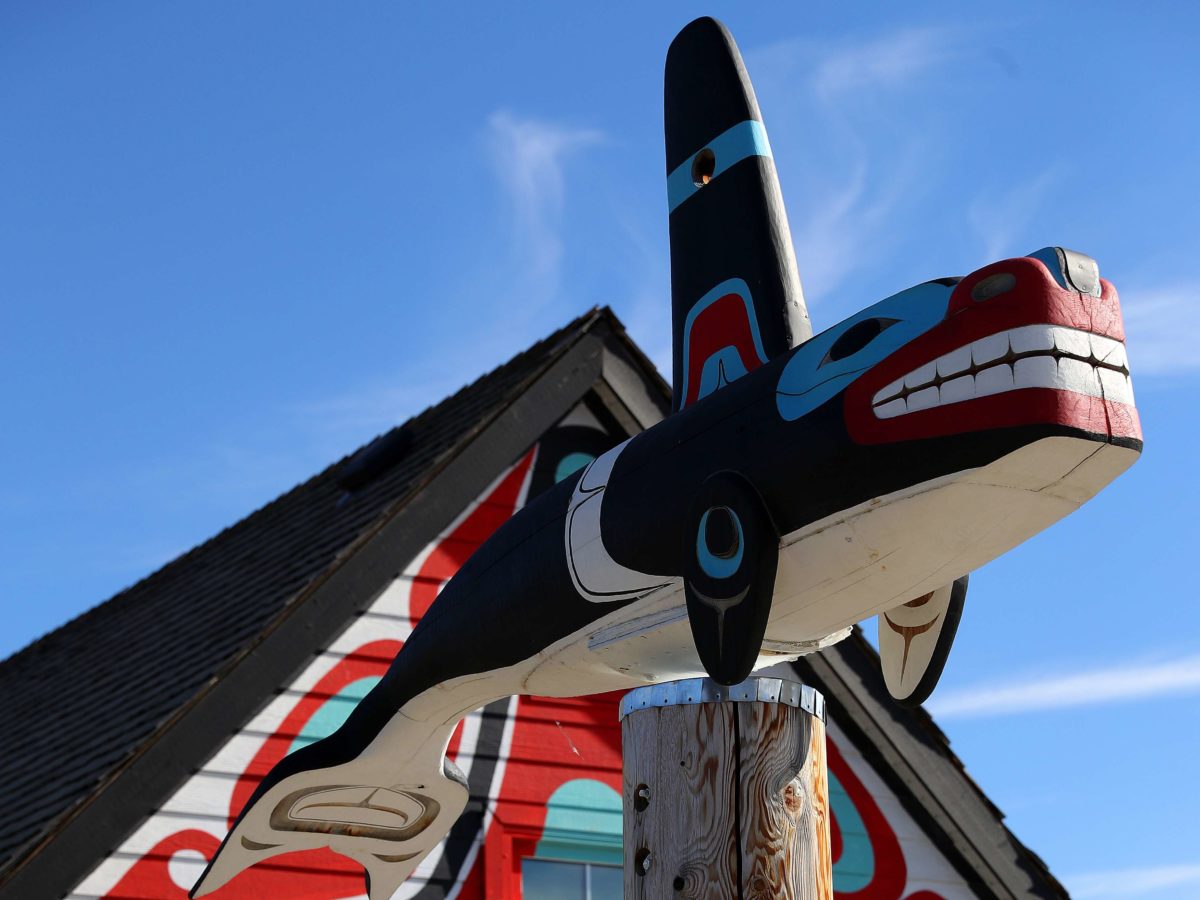
George Fischer Photography/Tourism Yukon
The Kwanlin Dün Cultural Centre in Whitehorse, a staple institution that anchors the vibrant town of almost 30,000, acts as an Indigenous museum, a base of operations for First Nations art residency programs, and a host for workshops and programs designed to promote the traditions unique to the area’s original inhabitants.
No visit to the Yukon is complete without experiencing the culture of the area’s First Nations stewards. It’s evident in the region’s arts, names, customs, and celebrations that remain deeply intertwined today.
An hour west of Whitehorse, meanwhile, is a living—and more intimate—museum operated by First Nations historian Harold Johnson. The property known as the Long Ago Peoples Place, also called Kwaday Dan Kenji, is marked by lodging, hunting and trapping setups, and cook houses that show how ancestral First Nations once lived and survived in this unforgiving landscape.
For those keen to listen, Johnson will share stories that span First Nations myth to marriage and family customs. And if you’re lucky, Johnson’s mammoth of a dog may even make an appearance.
“He’s got some timber wolf in him,” he told me.
Snowshoeing
Winter in the Yukon necessitates the use of gear that can stand up to the elements, and our tiny cadre wasted little time embracing just that during a snowshoe hike across a frozen Lake Laberge, a body that sits 30 miles north of Whitehorse.
I’d just buckled into my snowshoes and set out for our midnight stroll across the three-foot-thick sheet of ice—with another two feet of snow layered on top—when the thrill of genuine isolation set in.
Sweeping clouds kept hidden whatever aurora may have been present, but it didn’t matter—the activity had plunged us into a fantastical nighttime wonderland that, only 24 hours earlier, would have been difficult to even imagine.
The four-hour round-trip trek was arduous, each of us in the single-file column diverting attention between snowshoe placement and keeping track of the person ahead by way of a headlamp’s solitary glow.
Our path eventually ascended an island in the middle of the lake, where our guide built a bonfire and passed around tin cups of hot cocoa. We sat and watched the stars occasionally dance behind passing clouds while the warmth of my drink gradually thawed the formation of ice crystals in my beard.
Touring by Air
The best sightseeing in the Yukon may occasionally come by climbing aboard a single-engine Cessna and taking to the sky.
I embarked on two such flights, each soaring to heights that unveiled snow-covered mountain ranges with no end in sight. Shelves of dense snowpack seemed to teeter on the verge of collapse on every mountainside adjacent to our small aircraft. Glances at the forests below revealed networks of tracks meandering like veins of the earth. Moose and wolves. Glaciers stretched for miles, many jaggedly cut by crevasses that plunged hundreds of feet into a shadowy abyss. Frozen lakes formed long ago by glaciers cast rich blue colors intermittently covered by patterns of windswept snow.
And while each flight offered breathtaking sights, the region’s small commercial lines, such as Alpine Aviation, occasionally offer more than sightseeing—some even provide a faster mode of transport. One such flight from Whitehorse to the Southern Lakes Resort on Tagish Lake came by way of a ski plane that touched down on a frozen lake with hockey sticks as runway markers.
Letting the Dogs Out
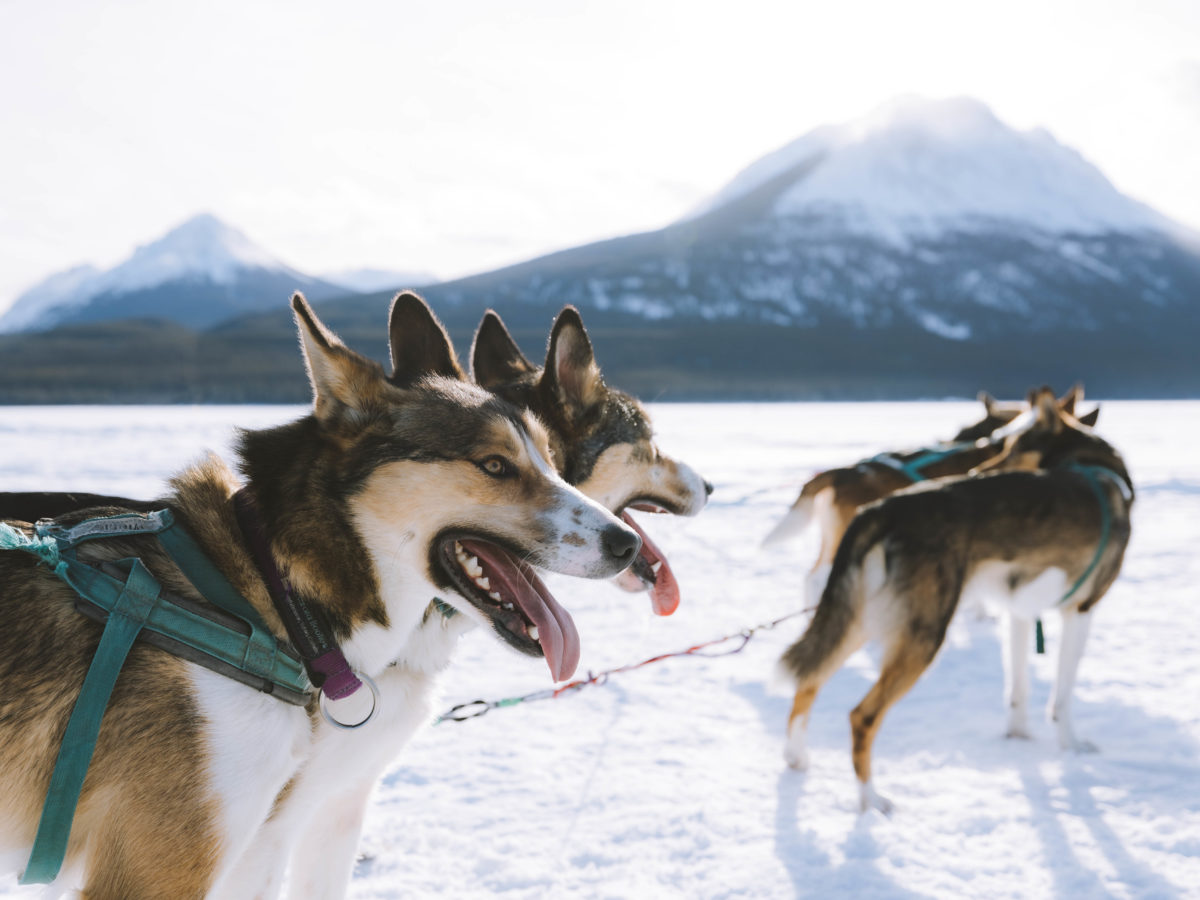
Pete O’hara And Jenna Dixon
A winter adventure in the Yukon must include one of the region’s most long-standing modes of transportation. Climbing aboard a sled led by an expert guide—most of the guides also own their dog teams—we raced across the lake and through trails under a dense forest canopy. Each dog, trained to follow the whistled commands of its leader, anxiously pulled our cargo, never breaking stride to hydrate on surrounding snowpack.
Miles transpired before the teams broke to enjoy a fire-cooked meal and hot chocolate or tea. I removed my boots and held my feet near the fire for a welcome respite from the cold.
The dogs, too, enjoyed their well-earned break, each reaping the rewards of passenger affections that came in avalanche capacity. Unlike many sled dogs, the teams in this region are socialized from the time they are puppies. Visitors, especially tourists arriving on Alaskan cruise lines, are drawn to the “Come See Sled Dog Puppies” billboards that grace roadways.
Snowmobiling
With the Southern Lakes Resort as a brief basecamp, our team set out to survey the property’s numerous snowmobiles, which range from heavy cruisers to light, sporty models.
Once each of us had selected a machine, our guide ushered the small convoy across Tagish Lake, under soaring mountain sentinels, and onto wooded trails that meandered up onto overlooks that framed the lake and its surrounding expanse like a postcard.
The experience of being on a faster machine became particularly gratifying on the return trek, when the guide gave the okay to venture away from the convoy and speed around—at about 70 miles per hour—on the lake’s untouched snowpack amid 360-degree, awe-inspiring views.
Truly, there is no wrong way to explore the Yukon. Its appeal spans seasons that each offer unique, other-worldly enrichment that will stay with you the rest of your life.
To gaze out at its tundra, to soar over its glacier-fed lakes, rivers, and mountain titans, to admire its vast caribou herd and the ties these animals and land maintain to the land’s original stewards is an experience that, over years of traveling, I have never come close to replicating.
The Yukon is Canada’s last frontier, and with a population density that boasts only one person for every two moose, there is much wilderness to explore. You just have to experience it for yourself.
More Yukon Travel Tips
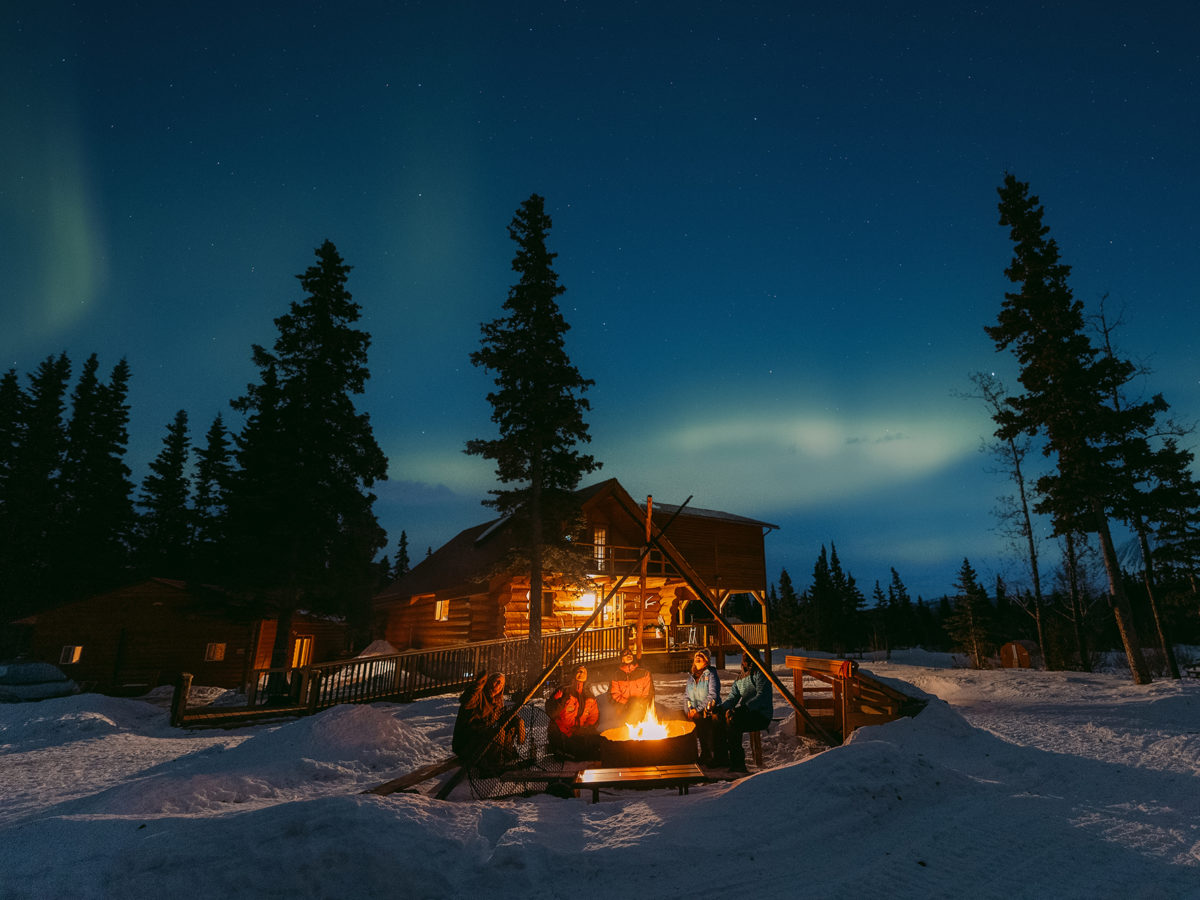
Pete O’hara And Jenna Dixon
Terra Riders
Finding adventure in the Yukon isn’t difficult, but few outfitters do it better than the informative guides of Terra Riders. Adventure packages comprise all seasons, from snowshoeing and “fat biking” in the winter months to mountain biking and multi-day canoe trips in summer. Also available are numerous camps for adults and children alike.
Rocking Star Adventures
Take to the sky to get perhaps the most impeccable views of the Yukon with the crew at Rocking Star. Admire glaciers from overhead and even fly alongside Mount Logan, Canada’s tallest peak at 19,551 feet. Tour packages range from 45 minutes to two hours.
Mount Logan EcoLodge
Sitting on the doorstep of Kluane National Park is no shortage of warm hospitality courtesy of the EcoLodge staff. Enjoy accommodations that range from a lodge room or cabin to a spacious yurt, each of which is nestled among a range of mountains that catch fire in the morning sun. Three-course dinners and gourmet breakfasts are included in each stay.
Southern Lakes Resort
This resort boasts traditional log cabins and luxury villas with incredible views of Tagish Lake and the surrounding peaks. Explore the area straight from the resort by dogsled, snowmobile, or snowshoe during winter, or mountain bike, kayak, boat, or ATV in warmer months.
Read the Current Issue Here!
Get one year of Sunset—and all kinds of bonuses—for just $29.95. Subscribe now!
